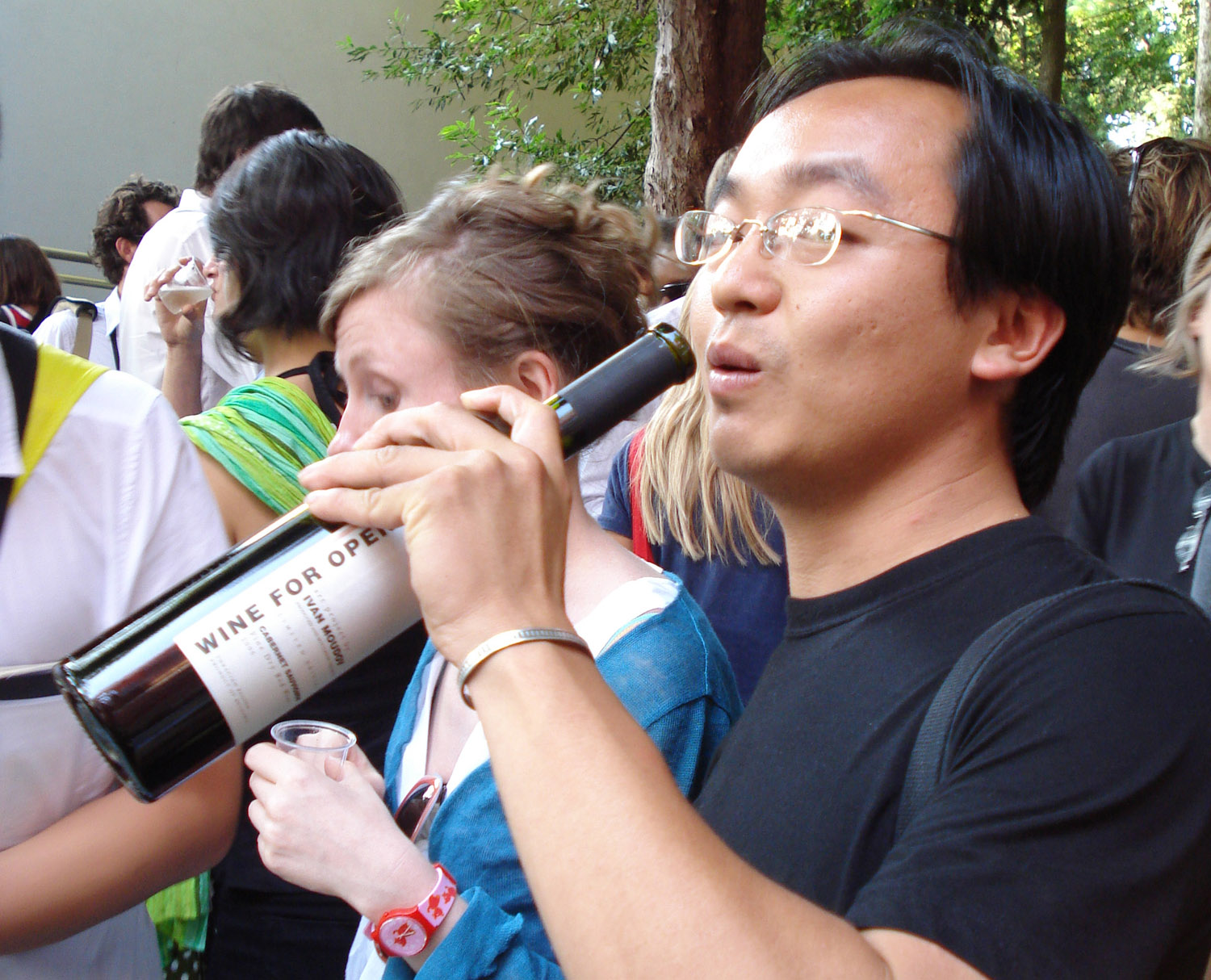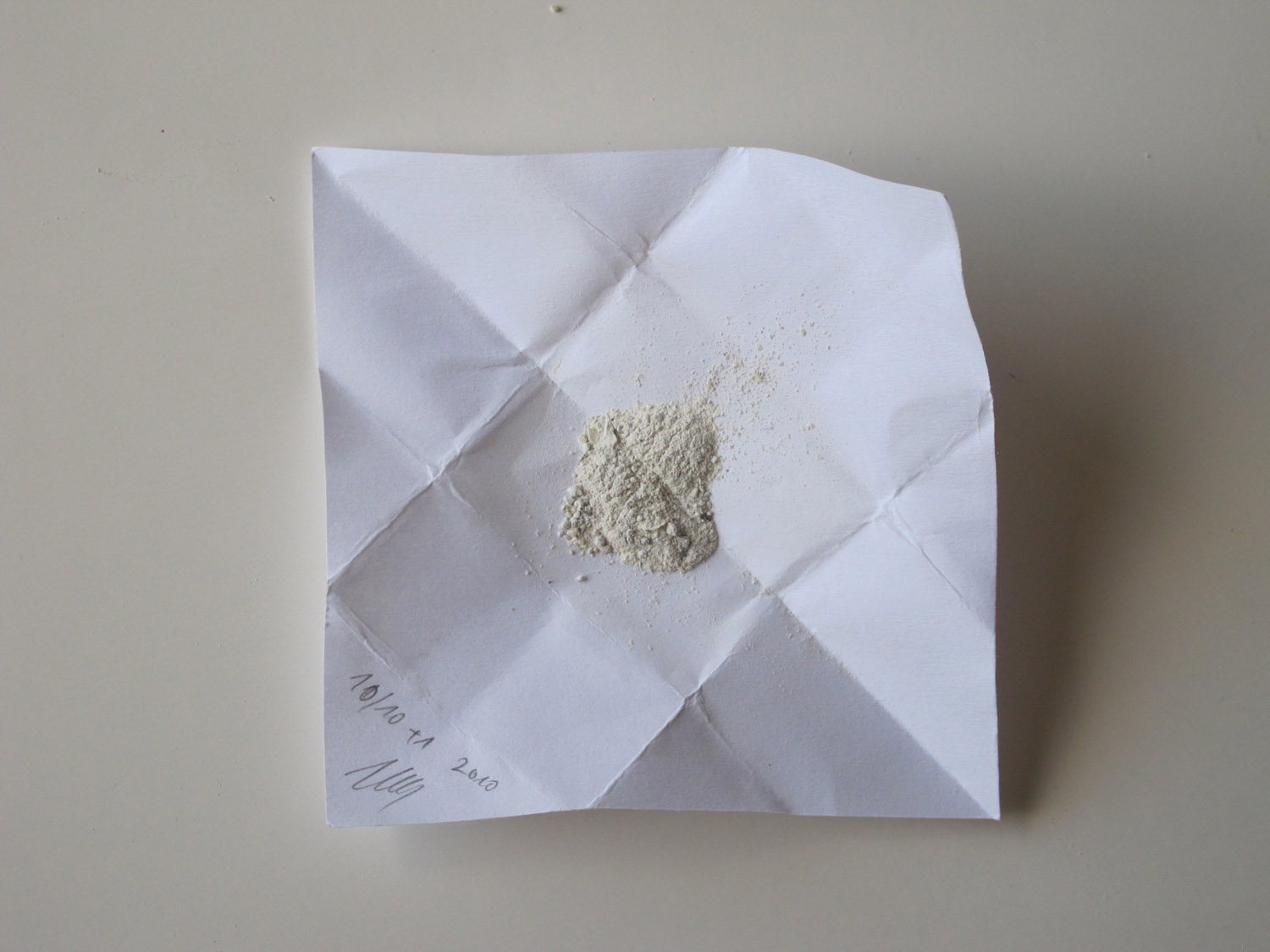PERFORMING INSTITUTION(S)
When in his well-known book “On the Museum’s Ruins” Douglas Crimp describes the participation of Marcel Broodthaers in the Document 5 exhibition curated by Harald Szeemann in 1972, he focuses the attention on the black square. It was drawn by the artist on the floor of the Neue Galerie and the words “private property” were written there in three languages. Directly related to the idea of the museum, Broodthaers’ work, according to Crimp, marks a new stage in the existence of the institution – the stage at which culture is fully engulfed by industry, art is reduced to private property, and the art strategies are consolidated with those of power.
Appropriating various artistic techniques and strategies of conceptual art, Ivan Moudov’s works are beyond the border described by Crimp. That border has been a long time there since not only art stopped being perceived as a universal value and the museum’s authority as objective and unconditional, but also the very criticism of the institutions turned into a part of the institutional game. Mudov is a “strategic player” in that field, which is providing him with the opportunity to use different institutional frameworks and art strategies, while disclosing the paradoxes of what “the system” allows and the limits of the legitimate perception of what is “art”. His works often provoke situations that bring about confusions in the expectations and routines of the public. His works might look like tricks because of the quick change of the context and the point of surprise for the spectator, but actually they reveal specific contradictions or possibilities within “the world of art”. Today’s existence of this world on both global and local level, as well as the divergence of these two – expressed through the paradoxes of the context – are the artist’s main topics.
A key work by Moudov, related to those topics, is the 2005 fake opening of a Museum of Contemporary Art (MUSIZ) in the building of the in-service Poduyane Railway Station in Sofia. On the verge of performance and art action, Mudov’s initiative aimed at drawing the attention to the absence of such a museum in Bulgaria - a problem that has been defined, discussed and elaborated by the country’s curators, critics and artists for years. The press releases, posters and billboards, distributed by the artist throughout the city managed to bring in to the opening a large number of people, including representatives of institutions, diplomats and journalists, who went to the de facto empty space of the railway station. The announcement of the opening and the striving to create a media event and an image of the museum turned into a performance, a mass happening, which “constituted” the institution in the public space. The artist presented the institutional framework in itself – a museum of contemporary art – mostly as a necessary, yet missing link between the local culture context and the international world of art. The empty space of the railway station where – instead of works – there are just ordinary benches and boards showing the schedule of passing trains, reflected the initial bewilderment of the public and, simultaneously, transformed the disappointment into expectation and imagining the museum. It seems as if, going beyond Broodthaers’ question “If a work of art is conditioned by lie or deception, is it still a work of art?”, Ivan Mudov reduced the institution of the museum (of contemporary art) to a certain framework of representation and included this dematerialized form of the museum into the global exchange of works, maintaining over time the mystification as to whether it is a real or imaginary institution. The MUSIZ (the abbreviation of the museum) appears also as a special vintage of Pommery champagne (MUSIZ - Champagne Pommery for the Grand Opening of MUSIZ Museum of Contemporary Art – Sofia, 2008) that matures in the Pommery wine cellars until the time the museum in question will be opened. When such an event occurs the special wine will be sent for the official opening. In 2009 the display of works from the (imaginary) collection of MUSIZ was announced to be exhibited in the Bulgarian Institute of Culture, Hamburg. The latter artistic initiative goes further into the issue of the museum of contemporary art by presenting the idea beyond the national cultural representation – the MUSIZ is as much a specifically “Bulgarian” museum, as it is an international one, just like any other.
Similarly to the fake opening at the railway station, the Bulgarian Institute of Culture, Hamburg is an art project, which is also related to the performative representation of a certain institutional framework. In this case it is the framework of the system of the State Institute of Culture abroad - its role being to represent “Bulgarian” culture as part of the foreign policy of the nation state. The work is a sui generis “privitization” of the symbolic resource of the institution, as well as a commentary on its clumsy and dysfunctional nature. The work emerges in close connection with the MUSIZ and is performed in 2009 as a public art project within the Hamburger Berge exhibition: one of the city buildings was rented and presented as a cultural institute, a plate was mounted showing the working time of the institution, and the artist distributed a press release – to the media in Bulgaria as well – according to which that was the first time an exhibition of works from the collection of the Museum of Contemporary Art, Sofia had been opened. However, during the “opening”, the door of the building remained locked, and through the windows one could actually see works submitted by the Falckenberg collection. Being converted from “an institute” into rather “a substitute”, the Bulgarian Institute of Culture, Hamburg continues to exist as a work even after the event was over; it exists in the form of an official site of the institution; information about new exhibitions and authors appears regularly. The purpose of the project is not much different from the announced “official” mission of State institutes of culture. However, the door of the building in Hamburg, which still has the plate of the Institute on it, remains closed at all subsequent openings.
It is difficult to say when a certain work of Ivan Mudov is “finished” – both the Museum of Contemporary Art and, partly, the Bulgarian Institute of Culture, Hamburg continue to exist over time and relate to other works and initiatives, creating the notion of the artist’s holistic approach, as though he just enjoys “playing” with the institutions, taking various roles and positions – of a gallerist, a culture manager, a collector, a curator, etc., just like in some other works of his – an ordinary dustman, a window cleaner or a traffic policeman. However, behind all these, there is always a certain context/background that the work criticizes or plays with. The background against which the MUSIZ or the Bulgarian Institute of Culture develops is the perception of an absence. In this case, the absence of real institutions as related to the cultural and political situation in Bulgaria is accompanied by a deeper frustration with the absence of content. If the conceptual practices in art make the institution’s framework visible, Ivan Mudov’s works present the dematerialized form of this framework as an object of art, this form in itself being transformed into a commoditized object of art. The “picture” is absent, only the frame is present. The „Guide” work, shown in 2006 as part of the “Neither a White Cube, nor a Black Box” exhibition of the Institute of Contemporary Art, Sofia in the Sofia City Art Gallery, is a “collection” of art works owned actually by different European museums. The works are presented only through entries in the audio guide and plates indicating the author and the title of the work on the white blank walls of the gallery. Using the audio guide, the visitors go from one absent work to another while a chimerical notion of an imaginary exhibition is formed – it is as though they are in a “real” museum.
Where Ivan Mudov’s “imaginary museum” of contemporary art ends – today this museum has turned out to be a vessel of the globalized idea of contemporary art, or according to Hans Belting, an airport awaiting the arrival of international art – there starts the “real” context in which the question of what for and where a museum is needed has its direct answer. The “Setting up of a Museum of Contemporary Art in Bulgaria” in 2010 is an action aiming at the actual legal registration of MUSIZ. Ivan Mudov hired a lawyer who deals in copyright law to register a private museum. Shown as a video, presenting the lawyer’s story about the circumstances and details of the registration procedure, the work is actually a study of the bureaucracy channels of Bulgarian legislation in the field of culture. In spite of the statutory guaranteed right and the accomplishment of the required procedures, it turned out that the museum cannot be registered because of the definition of “artistic value” used in the subordinate legislation ordinance issued by the Minister of Culture. According to that document in order for an artefact to be defined as artistically valuable, it should be older than 50 years and its assessed value should be at least BGN 300 000. Thus Ivan Mudov’s action made visible the difference between the “language” of contemporary art and the State’s perception of art, from the viewpoint of which this art obviously has no legitimate status. Along with that, the action shows the absurdity of the content of works such as the opening of the museum or the Bulgarian Institute of Culture. There is an apparent contradiction between art as part of the ideological machinery of the nation state and the contemporary world of art as an international network of institutions united by the flow of events, information, capitals and networks. It is the context of this contradiction that forms the actual content of Ivan Mudov’s works. The performative presentation of institutions relates to a change in the perspectives from which the works can be treated differently: within the immediate context they can be construed as actions and critical commentaries on the existing policy on art, while outside this context they seem to show (contemporary) institutions deprived of content and easily reducible to a representation frame. The artist is able to “speculate” in the world of art with the symbolic capital of this frame, using it, naturally, just as his “private property”.
 text
text

